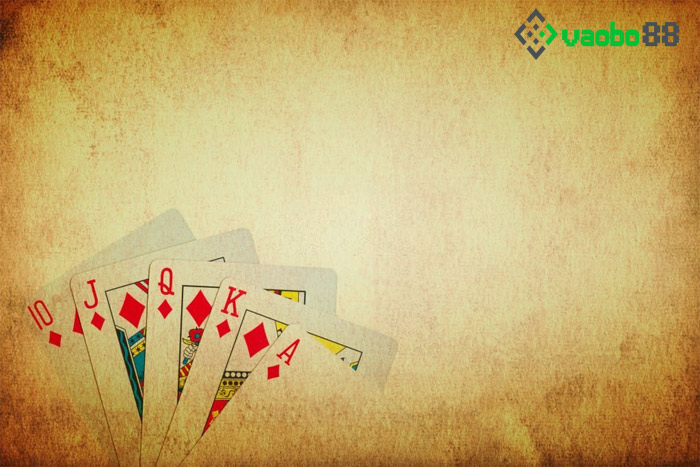If you are familiar with the same suit and same color rules of TLMB or the free play style of TLMN, you will find Tiến Lên Miền Trung to be very different.
This version has similarities as well as more distinct features compared to the other two regions, and if you want to know, read the following guide right away.
What is Tiến Lên Miền Trung?
Tiến Lên Miền Trung (TLMT) is another style of playing the 13-card Tiến Lên game that originates from the central part of our S-shaped country.
Unlike the northern version of the game, which has the same suit and same color rule, TLMT is 80% similar to TLMN and only adds a few different rules.

Although the stakes are not as high as in TLMN, it is extremely exciting with rules such as: Thối 2, thối ba bích, 3 or 4 đôi thông, etc.
Of course, if you are a newcomer wanting to conquer this game, you must thoroughly understand the differences in the rules below.
Although it is not as popular in casinos as TLMN, this game is actually quite attractive; once you start playing, it is hard to stop.
Guide to playing Tiến Lên Miền Trung
How to play Tiến Lên Miền Trung specifically, what are the most obvious differences? The answer will be clearer when you read the following instructions carefully:
a) Rules of Tiến Lên Miền Trung
Whether you play the offline or online version, you must adhere to the following principles:
- TLMT also uses a standard deck of 52 cards (excluding two kings).
- A game table will have 2 – 3 or 4 players, but of course, if there are 3 – 4 players, the stakes will be higher, making it easier to calculate cards and increasing the drama.
- Playing rule: The player who plays last will block the cards of the player who played first, and the winner is the one who frees all 13 cards first.
In this game, the same suit and same color rule is not used as in the northern version of Tiến Lên, but there are specific regulations as follows:
- The player who plays last must use a combination similar to the player who played first but must be higher in suit or points. For example, if the first player plays 3-4-5, the next player must block with 7-8-9 (any suit is acceptable).
- Players without blocking cards can skip their turn, but this means they must end that round, and they can only participate in the next round.
- Whoever plays the last card and is not blocked by anyone will start a new round, playing any combination.
Refer to the rules of Tiến Lên for the other two regions here:
b) Rules of dealing cards
Like Tiến Lên Miền Bắc, the Tiến Lên Miền Trung rules for dealing cards state that if playing directly, the table will self-regulate, and in the first round, one representative will deal the cards.
The following rounds will be dealt by the winner of the previous round. Each player receives exactly 13 cards, regardless of whether they play 2 or 4 hands, the number of cards received is fixed.
If playing online, the system will deal 13 cards to each player at the start of a new round and adhere to:
The first player in the first round: Is the player who holds 3 of Spades. Round 1 has not been taken over.
In subsequent rounds: The first player is the one who won the immediately preceding round or uses 3 pairs to take the right to be the dealer, which is similar to the way to play Tien Len Trung Quoc.

c) Card hands in Tien Len Central
In TLMT, the card hands are quite similar to tienlenmienbac, only differing in that suits do not need to be the same color. They are:
- Single card: 1 card, not combined with other cards.
- Pair: A combination of 2 cards with the same number.
- Three of a kind: A combination of 3 cards with the same number.
- Straight: A combination of 3 or more cards, increasing in value. Cannot combine 2 and straight.
- Three pairs: A combination of three pairs with increasing values, adjacent (cannot combine pair 2 into a pair).
- Four pairs: A combination of four pairs with increasing values, adjacent (cannot combine pair 2 into a pair).
- Five pairs: Consists of 5 pairs with increasing values, adjacent (cannot combine pair 2 into a pair).
- Six pairs: Includes six pairs with increasing values, adjacent (cannot combine pair 2 into a pair).
- Four of a kind: A combination of 4 cards with the same number.
- Dragon Straight: Similar to playing TLMT, it is a straight of a combination of 13 cards from 3 to 2, regardless of suits.
Additionally, you also need to remember some rules such as:
- About the increasing point values as follows: 3 → to 4 → to 5 → to 6 → to 7 → 8 → 9 → 10 → J → Q → K → A → 2
- About suits: Unlike TLMB where suits are not ranked, TLMT specifies that hearts are the highest suit → followed by diamonds → then clubs → then spades.
d) Understanding the rules of cutting cards in TLMT
Anyone who has played TLMB will see that cutting cards is a very different aspect of TLMT compared to the other two regions and is also a way to distinguish these forms of play.
As you know, TLMN allows cutting with three pairs, four pairs, four of a kind, while in TLMN, pairs cannot be used to cut, but in TLMT, pairs have another function.
Specifically:
- Three pairs: In TLMN, three pairs cannot be used to cut a pig. Three pairs can do 2 things: First, cut any card from A (Ace) down. Second, take the dealer’s right to play first.
- Four of a kind: Can only cut 1 pig/not like the game of Tien Len in the North where you can cut 2 pigs or cut a smaller four of a kind.
- Four pairs: Can cut 2 pigs but cannot cut 1 pig. Can cut a smaller four of a kind, four pairs smaller.
One more point to note is that four pairs cannot beat a pig, but there is a rule of “sitting idle also benefits,” meaning you can participate in beating at any time, without needing a round.
Take advantage of practicing 99 ways to lure the red pig to beat! Knowing a few tricks can help you lure your opponent to play according to your strategy to maximize rewards when beating the pig.
e) How is the TLMT game rule calculated for winning and losing?
In this game, players also need to firmly grasp the following rules to know if their hand wins or loses:
- Playing TLMT, the calculation of winning and losing is normal: The person who plays all 13 cards in hand first is the winner, continuing to play to determine second, third, and fourth.
- The rule of burning cards does not apply, meaning if someone wins first and you still have 13 cards in hand, you are not penalized for burning.
- You can end the game with any hand: Two, four of a kind, or a pair are all acceptable.
- If ending with a single 3 of spades: The player is considered to win the village, and all remaining players are treated according to the last loser rule.

f) Card penalty rules
Like TLMN, the Central version also strictly regulates the rules of beating cards. Accordingly, you need to comply with the following regulations:
- Penalty for 2: You lose last while still holding 2.
- Penalty for pairs/four of a kind: Last loser, still holding those special sets.
- Penalty for 3 of spades: Attempting to end with a single 3 of spades but failing ⇒ Considered a penalty for 3 of spades and compensating the village.
You can try the game of playing progression with beautiful people, losing a few rounds will give you experience right away.
Conclusion
It can be seen that the rules of playing Central Progression are quite different and also very unique.
If you are too familiar with TLMN or TLMB, you should try this version to feel the novelty.
The world of playing progression for real money rewards is very rich, enrich your experience, learn how to remember progression cards to confidently bring money home to your mother.








